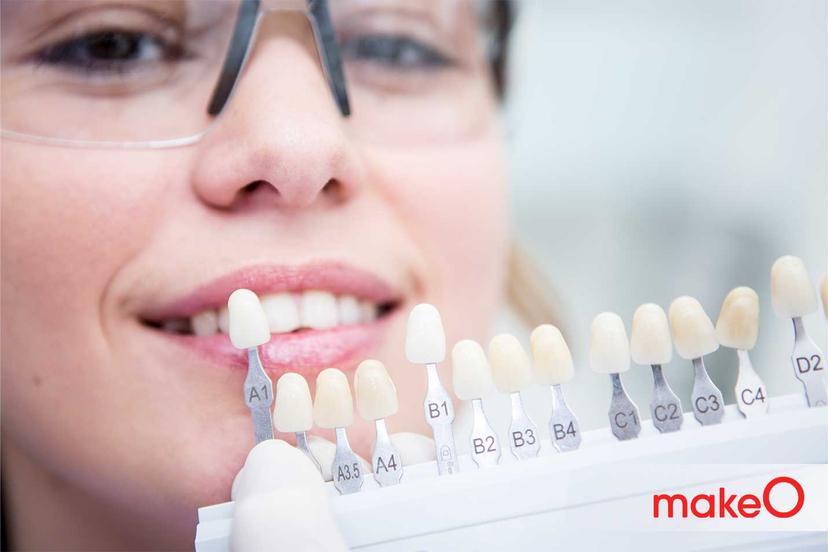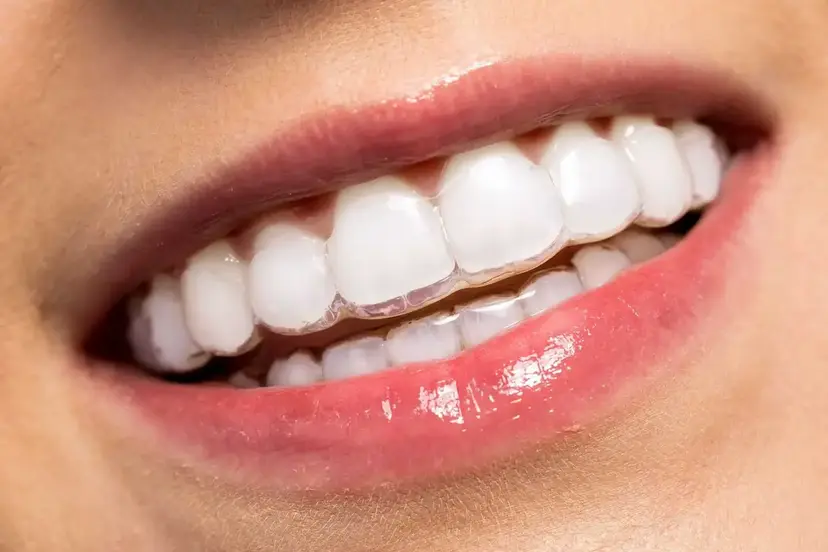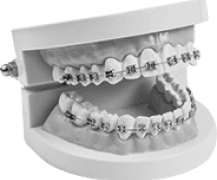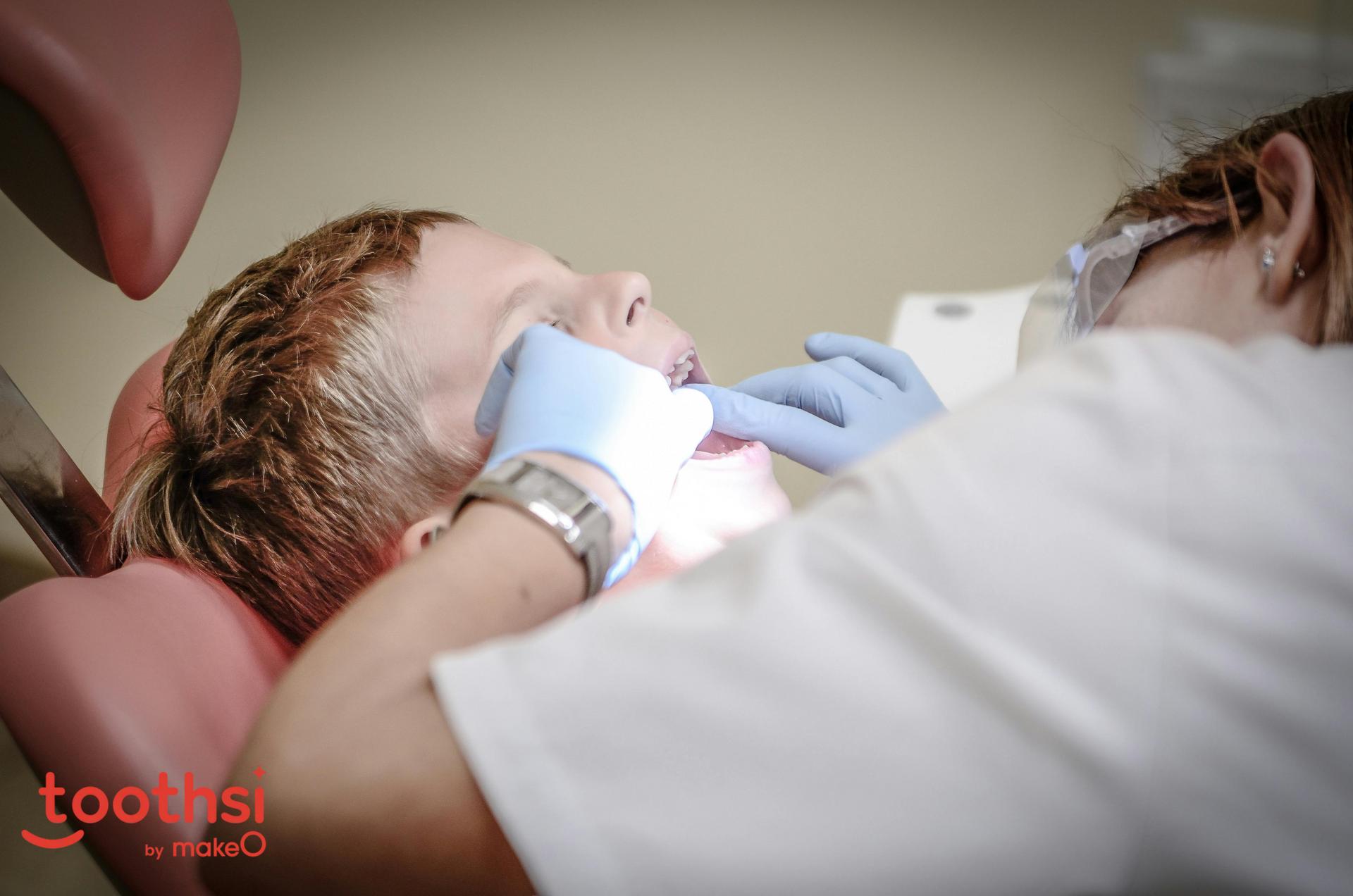MakeO blog
Periodontal or gum disease is an infection that affects the tissues that hold your teeth in place. Poor brushing and flossing ( Toothsi water flosser ) habits are very often the main cause of gum disease as it leads to plaque build-up. Plaque is a sticky film that forms on teeth, which harbors bacteria and leads to gum disease. Swollen, red, and bleeding gums are some common symptoms of early stages of gum disease known as gingivitis. If left untreated, it can progress to the underlying bone causing periodontitis, which can ultimately lead to the loosening of teeth. To prevent gum disease from occurring, it’s therefore crucial to maintain good oral hygiene and avoid plaque deposition.
In this article, we will discuss gum disease in detail: its common causes, signs and symptoms, and effective preventive and management strategies that can help deal with gum disease and improve your overall oral health.
Causes of Gum Disease
Here are some of the key factors that contribute to the onset and worsening of gum disease.
- Poor Oral Hygiene
- Smoking and Tobacco Use
- Genetics
- Poor Nutrition
- Hormonal Changes
In essence, gum disease primarily stems from the accumulation of plaque, a sticky film of bacteria. As plaque calcifies, it forms hard deposits between teeth and gumline called tartar which contain harmful bacteria that irritate and inflame the gums. However, factors like smoking, genetics, poor nutrition, and hormonal changes can significantly increase the risk of developing and worsening gum disease.
Gum Disease: Recognising the Warning Signs and Symptoms
Gum disease starts with mild signs and symptoms, but if ignored, it can lead to serious oral health issues. Here's how to recognize early gum disease.
- Swollen, painful, or bleeding gums
- Persistent bad breath or a sour taste in your mouth
- Receding gums exposing teeth roots
- Pain while chewing due to changes in bite
- Sensitivity to hold and cold food or drinks due to gum recession
As gum disease progresses, these signs and symptoms become more noticeable and severe. In addition, signs like the presence of pus near teeth or gums (called pyorrhea gum disease), formation of pockets around teeth, loosening of teeth, and at times the presence of systemic symptoms (like fever) are observed as the disease progresses.
Early recognition of gum disease is therefore necessary to prevent further damage. Regular dental visits and good oral hygiene are essential for managing gum health and stopping the disease from advancing.
Top Preventive Measures for Maintaining Healthy Gums
Preventing gum disease is essential to maintaining overall oral health. Early care is much easier than treating advanced gum issues. By practicing good oral hygiene and visiting your dentist regularly, you can avoid problems like gum infections. These simple daily habits can significantly reduce your risk of gum disease and promote healthy gums.
- Brush Twice Daily: Brush your teeth twice daily for two minutes with a soft-bristled brush and fluoride toothpaste to remove plaque and maintain oral health.
- Floss Daily: Flossing removes food particles and plaque between your teeth that brushing alone can’t reach. Use floss or interdental brushes for a thorough clean.
- Limit Sugary Foods: Reduce eating sugary foods as they can feed the bacteria in your mouth, which can cause plaque buildup and dental caries disease.
- Use Antibacterial Mouthwash: Antibacterial mouthwashes help reduce plaque buildup. Chlorhexidine mouthwashes are effective but should be used short-term to avoid side effects like staining.
- Quit smoking: Smoking may increase the risk of gum disease. It weakens your body's defenses against infection and restricts blood flow to the gums, slowing down healing.
- Schedule Dental Visits: Schedule regular professional cleanings and checkups to remove the residual plaque or tartar and identify early gum disease.
- Address Crowded Teeth: Misaligned teeth can trap plaque, making cleaning harder. Orthodontic treatment can improve teeth alignment, enhance oral hygiene, and reduce gum disease risks.
Prioritising good oral hygiene is the most crucial factor in preventing damage to your teeth and gums2. Brushing and flossing daily help remove plaque, preventing cavities and gum disease. Regular dental check-ups ensure early detection and treatment, supporting lifelong oral health.
Effective Treatments and Solutions for Gum Disease at Every Stage
Untreated gum disease can cause severe damage, but early treatment can often reverse its effects and prevent complications, with the approach varying based on severity. Here are some of the techniques of treating gum disease:
Simple Scaling: This is a routine dental cleaning that removes plaque and tartar from above the gum line. It is typically used for the early stages of gum disease, such as gingivitis, and helps maintain overall gum health.
Scaling and Root Planing: This is a deeper cleaning procedure where plaque and tartar are removed from below the gum line. The roots of the teeth are smoothed to prevent further bacterial buildup. This treatment is often used for mild to moderate gum disease.
Antibiotic Therapy: Antibiotics may be used to control gum infections. They can be applied directly to the affected area or taken orally, depending on the severity of the infection.
Advanced Treatments: For more severe gum disease, surgical procedures may be necessary. These include flap surgery, which removes deep plaque and reshapes damaged bone; bone grafting, which restores lost bone; and tissue grafting, which covers exposed tooth roots caused by gum recession.
Effective gum disease management requires collaboration with dental professionals. Regular brushing, flossing, and dental visits are essential to prevent recurrence. Consistent oral hygiene and routine checkups are crucial for maintaining long-term gum health.
Conclusion
Gum disease is a serious oral health condition that, if left untreated, can have significant consequences for your oral health and overall well-being. Recognizing the early warning signs, practicing good oral hygiene, and seeking professional dental care are crucial for preventing and managing gum disease. By prioritizing these steps, you can maintain healthy gums, prevent tooth loss, and improve your overall quality of life.
FAQs:
1. Why does my breath smell bad, and how can I fix it?
Bad breath, or halitosis, is often caused by poor oral hygiene, food particles, dry mouth, or underlying health issues. Brushing, flossing, and staying hydrated can help, but persistent bad breath may need professional dental care16.
2. Why are my gums swollen and bleeding?
Swollen, bleeding gums are often caused by gingivitis, an early stage of gum disease. Maintaining good oral hygiene and visiting your dentist can stop it from getting worse 18.
3. Can gum disease affect my overall health?
Yes, gum disease may have serious consequences for your overall health. Studies have shown a link between gum disease and other health conditions, such as heart disease, stroke, and diabetes19.
4. Why are my gums pulling away from my teeth?
Gum recession, where gums pull back to expose the roots, can be caused by aggressive brushing or gum disease. A dentist can recommend treatments to protect your gums and teeth20.
5. How do I get rid of plaque and tartar on my teeth?
Plaque and tartar are deposits on your teeth that regular brushing can’t remove. Professional dental cleaning, like scaling, clears these deposits from your teeth. Root planing smooths the roots, helping your gums heal and keeping bacteria away.
6. Can gum disease be cured?
Early treatment can often reverse the effects of gum disease and prevent further complications. However, severe cases of gum disease may result in permanent damage to the gums and bone. By recognising the early warning signs of gum disease, practicing good oral hygiene, and seeking professional dental care, one can significantly reduce the risk of developing gum disease and maintain healthy gums throughout your life.
7. How do I know if I have gum disease?
Early signs include red, swollen, bleeding gums, bad breath, and sensitivity. Severe cases may show gum recession, loose teeth, or pain while chewing. Regular dental checkups help detect it early.3,6
related categories
Related articles

This Diwali, Smile Bright With makeO Teeth Whitening Kit

Types of Braces: Removable vs Fixed Braces, Which is Right For You?

Dr. Pravin Shetty: Pioneer in Lingual Orthodontics & Innovative Smile Solutions
How do I Know I’m the Right Candidate for makeO toothsi Teeth Aligners?

